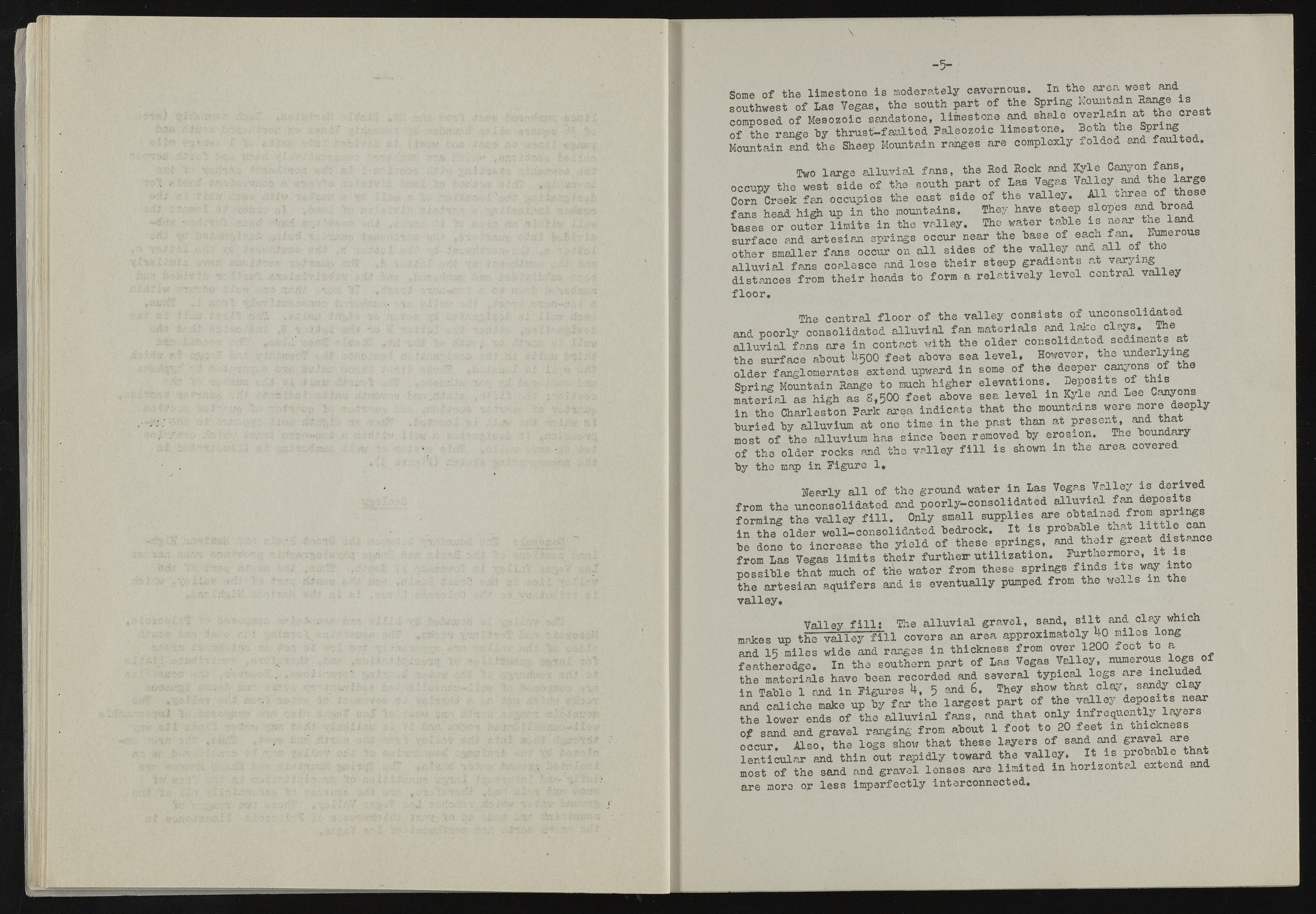Copyright & Fair-use Agreement
UNLV Special Collections provides copies of materials to facilitate private study, scholarship, or research. Material not in the public domain may be used according to fair use of copyrighted materials as defined by copyright law. Please cite us.
Please note that UNLV may not own the copyright to these materials and cannot provide permission to publish or distribute materials when UNLV is not the copyright holder. The user is solely responsible for determining the copyright status of materials and obtaining permission to use material from the copyright holder and for determining whether any permissions relating to any other rights are necessary for the intended use, and for obtaining all required permissions beyond that allowed by fair use.
Read more about our reproduction and use policy.
I agree.Information
Digital ID
Permalink
Details
Member of
More Info
Rights
Digital Provenance
Publisher
Transcription
\ Some of the limestone is moderately cavernous. In the area west and southwest of Las Vegas, the south part of the Spring Mountain Range xs composed of Mesozoic sandstone, limestone and shale _ of the range hy thrust-faulted Paleozoic limestone. Both the Spring Mountain and the Sheep Mountain ranges axe complexly folded and faulted. Two large alluvial fans, the Red Rock and Kyle Canyon fans, occupy the west side of the south part of Las Vegas Valley and the large Corn Creek fan occupies the east side of the valley. All three of thes fans head hidi up in the mountains. They have steep slopes and hroad I Z J ofou tfr lim it, in the Talley, The water table is near the land surface and artesian springs occur near the base of each fan. hnmerous other smaller fans occur on all sides of the valley and all of t alluvial fans coalesce and lose their steep gradients at varying distances from their heads to form a relatively level central valley floor. The central floor of the valley consists of unconsolidated and poorly consolidated alluvial fan materials and lake clays. The alluvial fans axe in content with the older consolidated sediments at the surface about U5OO feet above sea level. However, the underlying older fanglomerates extend upward in some of the deeper canyons of the Spring Mountain Range to much higher elevations. Deposits of this material as high as 2,500 feet above sea level in Kyle and Lee Canyons in the Charleston Park area indicate that the mountains were more deeply buried by alluvium at one time in the past than at present, and that most of the alluvium has since been removed by erosion. The boundary of the older rocks and the valley f i l l is shown m the area covered by the map in Figure 1, Reaxly a ll of the ground water in Las Vegas Valley is derived from the unconsolidated and poorly-consolidated alluvial fan deposits f o m l i the Talley f i l l . Only small J u l i e s ere obtained from springs in the older well-consolidated bedrock. It is procable “ be done to increase the yield of these springs, and their great distance from Las Vegas limits their further utilization. Furthermore, it is possible that much of the water from these springs finds its way into the artesian aquifers and is eventually pumped from the wel-s in the valley. - 5- Valley f i l l : The alluvial gravel, sand, s ilt and^clay which makes up the valley f i l l covers an area approximately ho miles long and 15 miles wide and ranges in thickness from over 1200 feob to a featheredge. In the southern part of Las Vegas Valley, numerous logs the materials have been recorded and several typical logs are inc u e in Table 1 and in Figures k , 5 and 6. They show that clay, sandy c ay and caliche make up by far the largest part of the valley deposits ne the lower ends of the alluvial fans, and that only infrequently layers o f sand and gravel ranging from about 1 foot to 20 feet in thickness occur. Also, the logs show that these layers of sand and gravel are lenticular and thin out rapidly toward the valley. It isprobable he most of the sand and gravel lenses are limited in horizontal extend and are more or less imperfectly interconnected.

